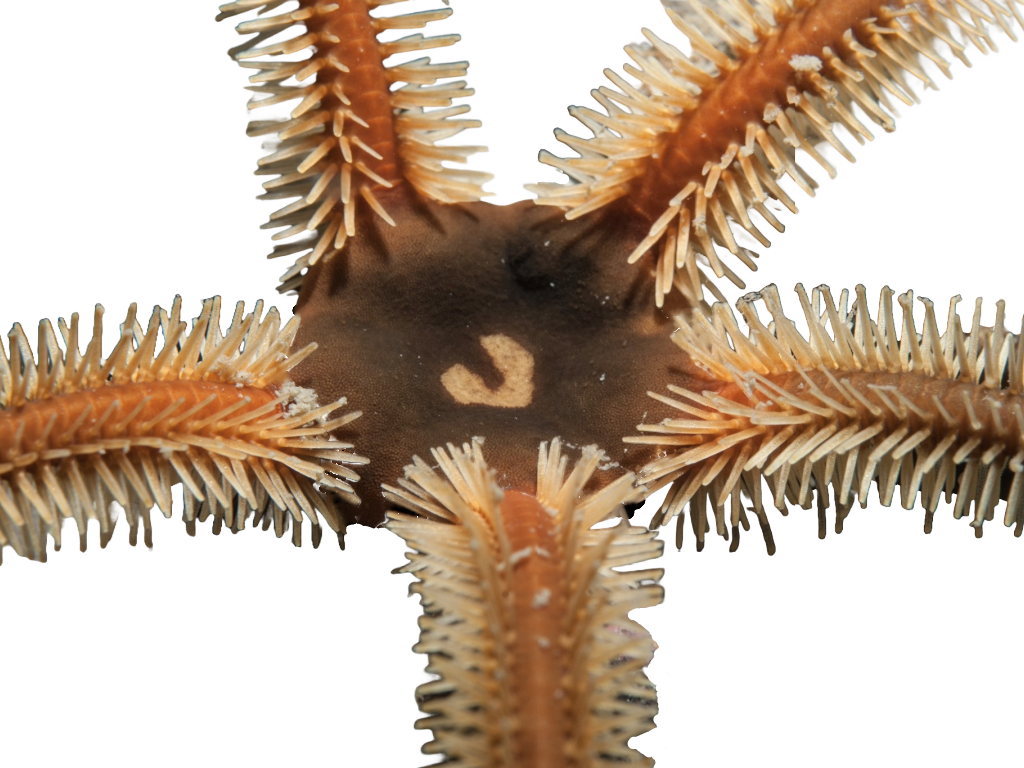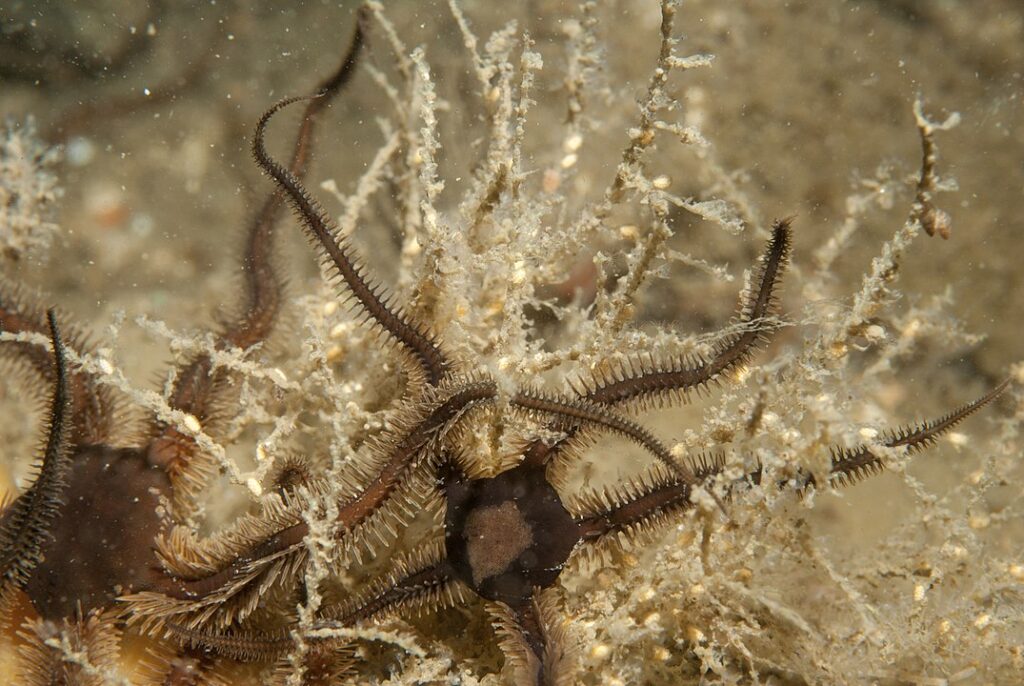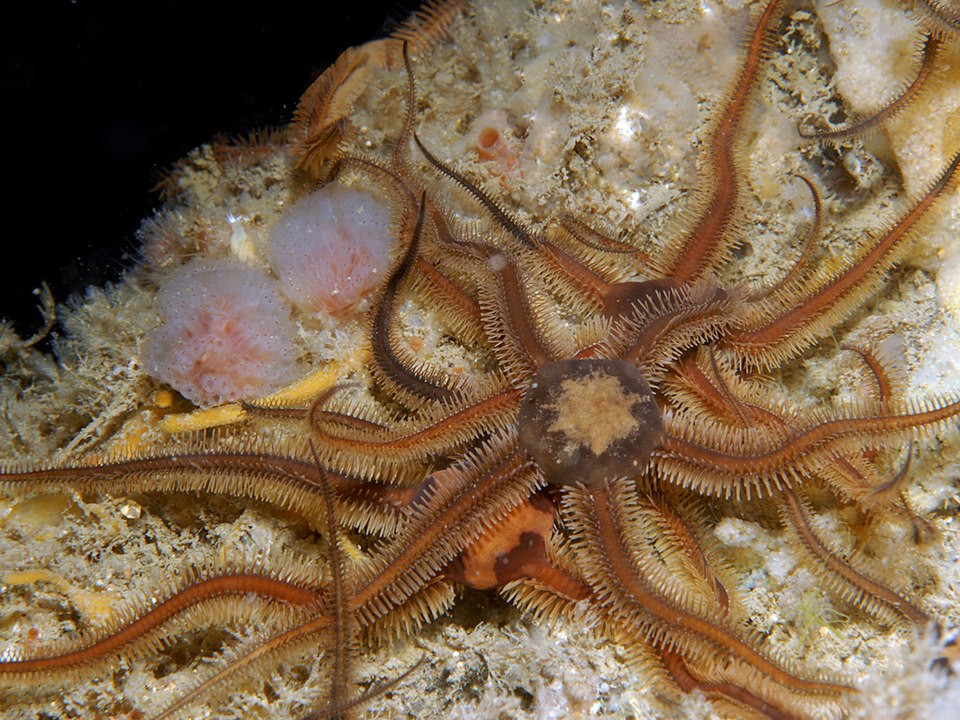Black Brittle Star
Ophiocomina nigra

Food: Plankton and other small organic matter.
Catches food with a mucous net
The black brittle star is a fast little creature with a dark body covered in tiny granules. It thrives best on sandy, rocky or hard seabeds, preferably in large colonies. They often live together with their relative, the common brittle star. They grow slowly, and reproduce when they are 3-4 years old.
The black brittle star makes a net of mucous, which it spreads between the spines on its arms. It uses the slimy mucous to catch plankton, algae and small animals, which are then rolled up into small balls that it moves to its mouth. The mucous net tastes bad and is therefore also a good protection against predators!

Photo: Bernard-Picton-CC-BY
Related to the more famous starfish
Brittle stars belong to the echinoderms, and are related to starfish, among others. There are about 2200 species of brittle star in the world and 20 or so species in the waters around Sweden. Brittle stars are one of the oldest groups of animals on Earth. They live on the seabed, from shallow areas down to the deepest depths of the oceans.
All brittle stars have a distinct round body disc with long, slender and spiny arms. The mouth is on the underside of the body, just like with starfish and sea urchins. They are nocturnal and can move very quickly by wriggling their arms.

Photo: Bernard-Picton-CC-BY-SA
If a body part is lost, a new one grows
Like the starfish, the brittle star can repair itself if it loses a body part. If it loses an arm, it quickly grows a new one. If attacked by a predator, a brittle star can defend itself by breaking off an arm.
Distribution in Sweden
All along the west coast, down to Öresund.
White marking = Distribution

Threat based on the Red List

Trade regulations
CITES: Not listed.